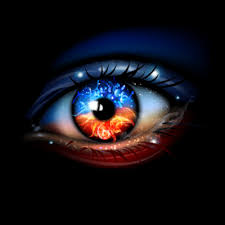According to published reports, human communication is a multifaceted interplay of verbal and nonverbal cues.
Our eye movements serve as a powerful form of nonverbal expression. Beyond their role in visual perception, eye movements are intricately linked to various sensory modalities, including smell, auditory memory, taste, and emotional memory. In this article, we explore the fascinating connections between eye movements and the senses, shedding light on the nuanced language that lies beneath our gaze. Look carefully into someones eyes and you may be able to better understand what the are thinking.
Smell, Taste, and Sensory Synthesis: The senses of smell and taste evoke powerful memories and emotions, shaping our perception of the world. Surprisingly, eye movements are intricately intertwined with these sensory experiences. When individuals recall specific smells or flavors, their eye movements may mirror the spatial and temporal dynamics of the sensory experience. For example, imagining the aroma of freshly brewed coffee may elicit upward or lateral eye movements, reminiscent of the act of inhaling the fragrant scent.
https://youtu.be/TY1giZgddAs?feature=shared
Auditory Memory and Construction of Soundscapes: Auditory memory, the ability to retain and recall sounds, plays a pivotal role in our cognitive processes. Eye movements are intimately connected to auditory memory, guiding the construction of internal soundscapes and mental imagery. When individuals recall familiar melodies or voices, their eye movements may trace the contours of the auditory landscape, reflecting the spatial and temporal organization of the soundscape.
Visual Imagery and Internal Memory: The construction of visual images relies on both external stimuli and internal memory representations. Eye movements play a crucial role in this process, guiding attention and facilitating the integration of visual information. When individuals mentally visualize scenes or objects, their eye movements may mirror the spatial layout and temporal dynamics of the imagined imagery, providing insights into the construction of internal memory representations.
